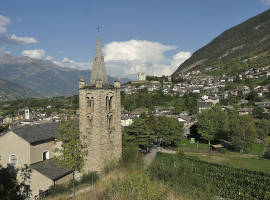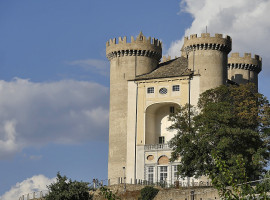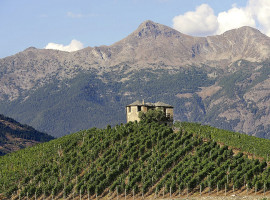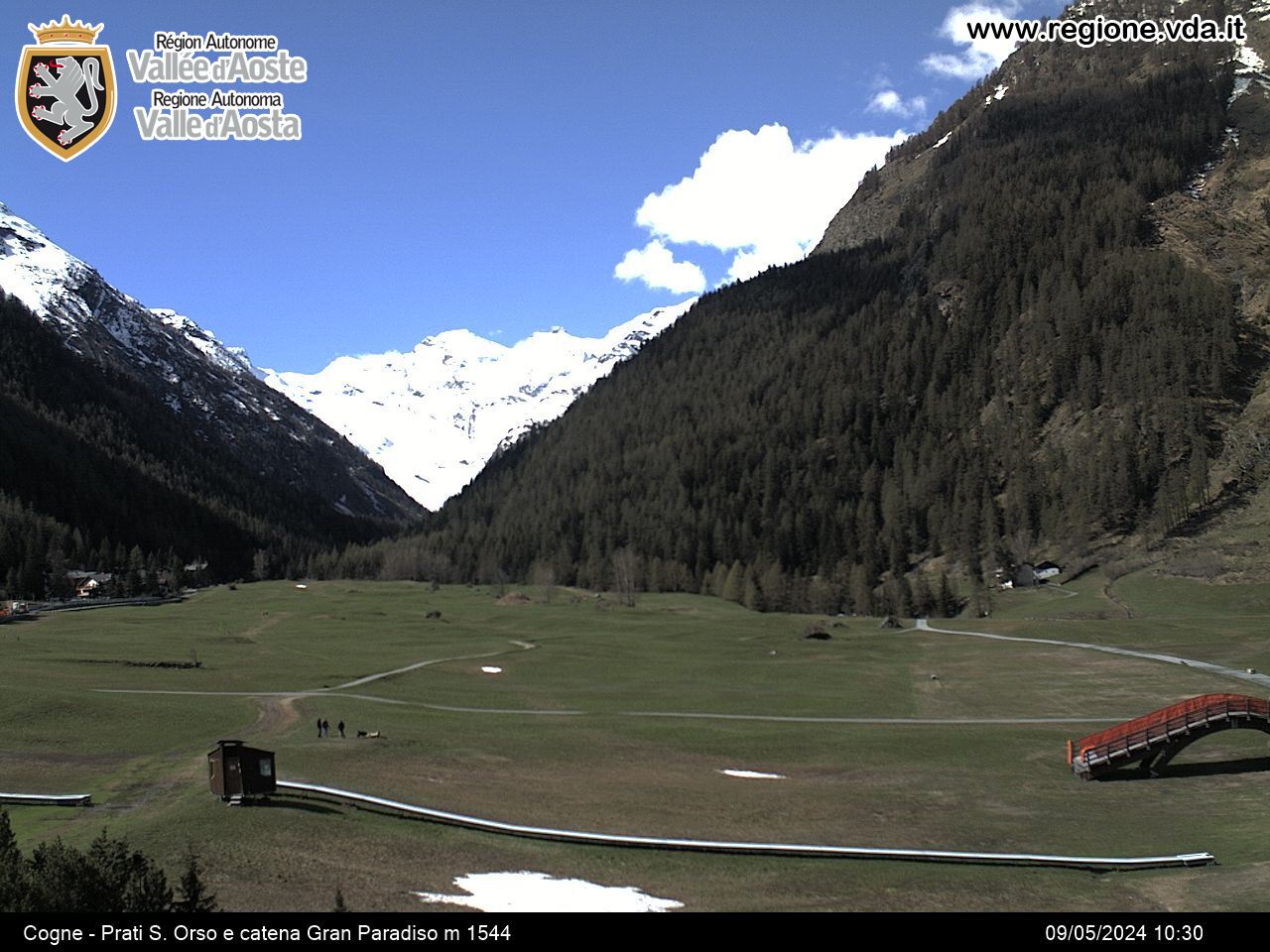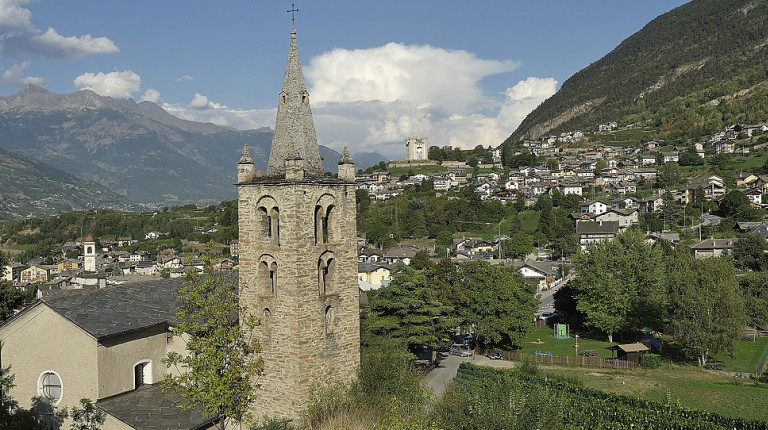
Aymavilles
Aymavilles
The castle of Aymavilles is the most characteristic and recognisable element of the municipality due to its position and architecture. It is in fact characterised by four cylindrical towers crowned by machicolations, which enclose a central body with a square base. The building, whose origins date back to the 12th century, has been repeatedly remodelled, changing its purpose from defensive to that of an elegant stately home within a large park.
The Church of Saint Léger, with a beautiful façade entirely covered in frescoes, is the most noticeable structure when driving along the state road towards Cogne, even though it is not the parish church. The religious historian Abbé Henry traces its origins back to around the 19th century. It has a single nave with cross vaults decorated with bright and rich pictorial decoration executed in the years 1856-1857 by the painter Grange, who also created the characteristic trompe-l'oeil façade. Upstream and detached from the church is the bell tower, a beautiful square stone tower that rises solidly and elegantly, with an octagonal pyramid spire; it is presumed to date back to the late Renaissance, 15th-16th century. In the belfry is the oldest dated bell in the Aosta Valley: cast in 1372 and dedicated to the Virgin Mary, it bears the inscription Ave Maria gratia plena, Dominus tecum. A.D. MCCCLXXII.
Pont d'Aël is one of the most beautiful and well-preserved Roman monuments in the Aosta Valley. It is an aqueduct bridge built in a gorge in the valley that rises towards Cogne, about 56 m high above the level of the watercourse. An inscription on the north face allows it to be dated to the year 3 BC.
The parish church dedicated to Saint Martin, in the heart of Aymavilles, is of considerable importance: not only is it counted among the first 15 parishes in the Valley born around 1600, but it is also mentioned together with the churches of St. Germain and Morgex as forming the triad of churches with the attribute of plébanies. Mentioned for the first time in a papal bull of 1176, the church was rebuilt in 1724-1725.
The morainic slopes of the Aymavilles territory seem particularly suited to the cultivation of vines; it is no coincidence that several native vines grow there, some of which have always been cultivated, others almost abandoned and now recovered and put back into production.


